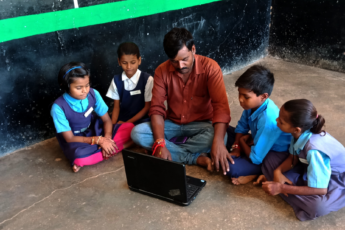Promoting Critical Thinking With Student-Generated Questions

Generating questions is often equal parts a creative and cognitive process. Teaching students to ask their own questions as part of the learning process is a powerful and fascinating way to promote deeper thinking about a topic. Asking students to generate their questions and troubleshoot their answers develops critical thinking skills.
Student-generated questions have great potential for deeper thinking because students are prompted to reflect upon what they have learned before articulating their thoughts and ideas in a back-and-forth manner with peers, teachers, or both. Elaborating the content goes beyond knowing ‘what,’ ‘how,’ or ‘why’, and encompasses exploring ‘who,’ ‘where’, and ‘when’ factors relevant to the content or subject-matter.
Students are more than just observers and recipients of information in many cases. They also possess the potential to influence and change that very information. A study found that teachers ask 93% of classroom questions, leaving little scope for students to formulate their own. Encouraging students to develop their own questions fosters critical thinking, helps internalize the subject material more fully, and identifies areas where they need further clarification.
The Importance of Student-Generated Questions
Student generated questions often point out gaps between what students know and what they need to know to understand what is being taught. These gaps may not be apparent from a teacher’s lecture or from the answers students write on worksheets or give on tests. The questions students ask indicate that they are processing what teachers are discussing, and they have been trying to draw connections between the ideas presented and other things they already know.
Questions are an excellent way for students to check their understanding of a topic before moving on to new material. Student-generated questions also allow students to take control of the direction of their learning. Furthermore, when students ask questions, they engage with the material at a higher level and understand it in greater depth. They have a better chance of understanding the material or skill if they know their knowledge gaps, and articulate it. The teacher also gets insights into what the students understand and what areas they might do well to pay more attention to during instruction. This helps the teacher get more out of each class period.
While in-class discussion of student-generated questions is practical, teachers can also use such questions in online or in-person activities. Here are three classroom activities that incorporate student-generated questions.
✏️ Teach Students How to Ask Relevant Questions
Teaching kids to ask great questions is just as important as teaching them how to answer them. Some students may be hesitant to generate questions independently and resort to yes/no or factual prompts at first. To elicit more complex questions, ask students to reflect on some of the more difficult concepts they have encountered in class and then pose questions that begin with “explain” and help them focus on the how’s and why’s of a concept.
✏️ Have Students Create their Own Tests
Students who generate their questions often think more deeply about what they do not know or understand. This active learning technique enhances students’ content knowledge, develops critical thinking skills, and improves retention by forcing them to think about the material differently. Learning is much more effective when we actively engage with the material rather than passively read or listen to it. When students create test questions, they are forced to process and reflect on what they are learning rather than simply reading about it or listening to a lecture about it. Additionally, creating test questions requires that students analyse and synthesise information and critically evaluate the quality of their research and arguments.
✏️ Play Games to Encourage Creative Questions
Playing games encourages students to ask questions because it engages their curiosity. At the end of each class, give the students a puzzle to take home and think about. At the next class, each student has to ask at least one question about the puzzle, whether asking for hints or checking their answer. Students are often reluctant to speak up in class, so this exercise gets them talking. The game is also fun for kids because it can be played in class or small groups.
Another way to do this is to ask children to play with a few pieces of Legos or building blocks. Children who played by themselves created new shapes and designs, followed the directions in the manual, or built things that already existed. When people played in groups, they asked more questions of one another, such as “What if we did this?” and “What would happen if we combined these pieces?” These questions allowed them to create more innovative designs.
Student generated questions tap into a child’s natural curiosity, and helps unlock a world of learning for them that will lead to a lifelong journey of discovery and enrichment.
At Square Panda India, our team of experts creates adaptive, self-paced curriculum that engages children throughout their learning journey. Our programs are tailored to deliver improved learning outcomes and provide a more holistic educational experience. To learn more, visit our website – ecce.squarepanda.in




Leave a Comment